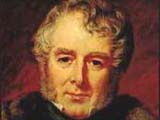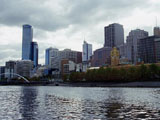| ||||||||||||||||||||||||||||||||||||||||||||||||||||||||||||||||||||||||||||||||||||||||||||||||||||||||||||||||||||||||||||||||||||||||||||||||
|
First entered Parliament: 31 January 1806 Age he became PM: 55 years, 123 days and 56 years and 34 days Maiden1 speech: 19 December 1806 in the reply to the King's speech Total time as PM: Six years, 255 days Died: 24 November 1848 at Brocket Hall, Hertfordshire Facts and figuresEducation: Eton and Trinity College, Cambridge Family: Melbourne was the second born of six children Interests: Conversation, reading, shooting BiographyViscount Melbourne had two lives - the first as the cuckolded husband in one of the most scandalous affairs of the nineteenth century, and the second as senior statesman and mentor to Queen Victoria. Born William Lamb, in 1805 he succeeded his elder brother as heir to his father's title. Now known as Lord Melbourne, he married Lady Caroline Ponsonby. It was a marriage which was to cause him no small amount of grief. He first came to general notice for reasons he would rather have avoided, when his wife had a public affair with poet Lord Byron. The resulting scandal was the talk of Britain in 1812. In 1806 he was elected to the Commons as the Whig MP for Leominster, where he served 1806-1812 and 1816-1829, before joining the House of Lords on his father's death. He was Secretary for Ireland 1827-28, and Home Secretary 1830-34, during which time he cracked down severely3 on agricultural unrest.
Without any strong political convictions, he held together a difficult and divided Cabinet, and sustained support in the House of Commons through an alliance of Whigs, Radicals4 and Irish MPs. He was not a reformer, although the Municipal Corporations Act of 1835 did ensure that the growing middle class secured control of local government. Efficient PM But he was efficient in keeping order, raising taxes and conducting foreign policy. Melbourne also had a close relationship to the monarch5. He was Queen Victoria's first prime minister, and she trusted him greatly. Their close relationship was founded in his responsibility for tutoring her in the world of politics and instructing her in her role, but ran much deeper than this suggests. Victoria came to regard Melbourne as a mentor and personal friend and he was given a private apartment at Windsor Castle. Later in his premiership, Melbourne's support in Parliament declined, and in 1840 it grew difficult to hold the Cabinet together. His unpopular and scandal-hit term ended in August 1841, when he resigned after a series of parliamentary defeats. Wife
The daughter of Frederick Ponsonby, 3rd Earl of Bessborough, and the granddaughter of the 1st Earl Spencer, she was born in 1785. Her education was haphazard6. When she was ten, her grandmother became alarmed at Caroline's eccentric behaviour. She consulted a doctor, who advised that Caroline should not be strictly7 disciplined. As a result, she ran wild, and could not write or spell until she was in her teens. Despite her lack of formal education, Lady Caroline was a good linguist8, fluent in French, Italian and Greek. She was artistic9, loving music, painting watercolours and writing poetry and novels. Impulsive10 and excitable, she sometimes verged11 on hysteria, and often flew into terrible rages. Lady Caroline married Lord Melbourne, in 1805. After two miscarriages12, she gave birth to their only child, George Augustus Frederick, in 1807. He was epileptic and mentally handicapped and had to be cared for almost constantly. Lady Caroline was devoted13 to him. In 1812, Caroline read Lord Byron's Childe Harold's Pilgrimage and declared: "If he was as ugly as Aesop, I must know him." On meeting Byron that summer, she famously noted14 in her diary that he was "mad, bad and dangerous to know".
Embarrassed and disgraced, Melbourne decided16 to part from his wife, though the formal separation did not occur until 1825. Lady Caroline died in 1828, aged17 42, her death hastened by drink and drugs. Lord Melbourne, not yet prime minister, was by her bedside. Quote unquote
Did you know?Melbourne's most lasting18 memorial is the city in Australia which was named after him in 1837. 点击  收听单词发音 收听单词发音
|
||||||||||||||||||||||||||||||||||||||||||||||||||||||||||||||||||||||||||||||||||||||||||||||||||||||||||||||||||||||||||||||||||||||||||||||||
- 发表评论
-
- 最新评论 进入详细评论页>>

 Born: 15 March 1779 at Melbourne House, Piccadilly, London
Born: 15 March 1779 at Melbourne House, Piccadilly, London On Grey's resignation in 1834, King William IV appointed Melbourne as the Prime Minister who would be the 'least bad choice', and he remained in office for seven years, except for five months following November 1834 when Peel was in charge.
On Grey's resignation in 1834, King William IV appointed Melbourne as the Prime Minister who would be the 'least bad choice', and he remained in office for seven years, except for five months following November 1834 when Peel was in charge. Lady Caroline Ponsonby- Lamb was not a typical politician's wife.
Lady Caroline Ponsonby- Lamb was not a typical politician's wife. They began an affair which lasted until 1813, but even after it finished Lady Caroline's
They began an affair which lasted until 1813, but even after it finished Lady Caroline's 

